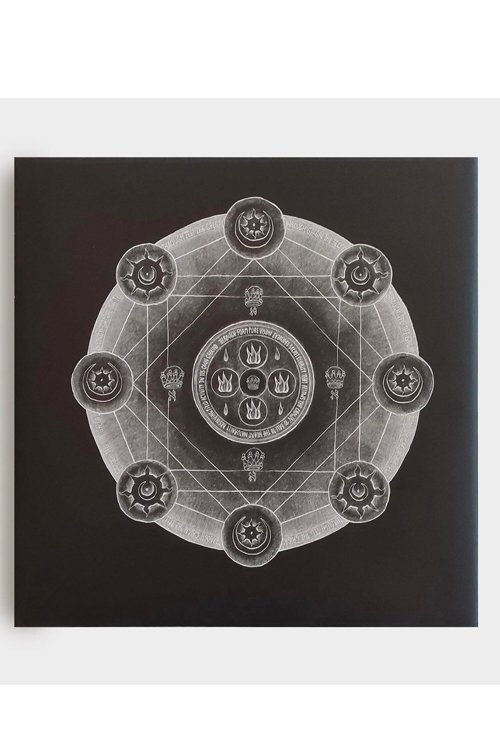David Chaim Smith

(b.1964, New York). David was a visual artist during the late 1970’s and 1980s, and abandoned art for an exclusive ten-year dedicated training in various esoteric disciplines between 1996 and 2006. This immersion served as the foundation for a return to a variety of forms of creative innovation in 2006.
The first work that appeared in published form was in 2010. It was a line-by-line commentary on the first 3 chapters of the Bible called The Kabbalistic Mirror of Genesis (Daat Press). In 2012, a large format catalogue of images and texts was published under the title of The Sacrificial Universe (Fulgur Press) and then a second similar volume was published under the title Blazing Dew of Stars in 2013 (Fulgur Press). Additional material from this period was published later in 2014 under the title The Awakening Ground (Inner Traditions).
In 2012 he entered into 3 years of silent solitary retreat in various forms. The work done during this period served as the basis for a set of 7 volumes called the Lightning Flash of Alef Series.
Find David Chaim Smiths’ gallery on The Occult Library here
Website - https://www.davidchaimsmith.com/
Publications
Volume three is titled Metacartograph. A metacartograph is the highest category of esoteric cartography, which is a type of sacred image making unaffiliated with either organized religion or secular culture.
Volume Two, Calling Forth the Aethers, is a kabbalistic treatise on the practice of gathering and envisioning subtle aetheric impulses. The text focuses on the theory that supports various forms of scrying, and serves as the basis for the method of esoteric cartography on display in the images accompanying the text.
Volume One bears the title of the series is based on a set of 72 concise contemplative passages presented in numbered sections, accompanied by details and images from the extended body of esoteric cartographs from 2006 until present.
The Eneatych is the crowning jewel of the LFA series. The text contains three sections. The first offers the root practice of the system and gives complete instructions for its performance.
This dark visionary upheaval turns the animal sacrifice of the Hebrews back upon itself. The sacrificial beast is the expanse of reality itself, and the smoldering fire upon which it is offered arises spontaneously from its own flesh.
Quintessence of Secret Mercury has three sections. The first describes the five aspects of a mental construct imbued with life force, known as a golem.
The Fountain of Wisdom is a highly obscure 13th century text. This is highly unusual, because most Kabbalistic systems have been derived from Lurianic sources derived from The Zohar.
This is a proper introduction to the system that also provides an opportunity for the training of contemplative skills. Originally written in 2019, The Thirty-Two Keys offers a diagrammatic overview of the path.
Bath of Bright Silence articulates a practice derived from the thirteenth-century Iyyun School of kabbalah called The 13 Phases of Tikkun Kadmon describing a contemplative method in which the practitioner immerses within the infinite bath of luminous silence.
A kind of “mining operation” took place in 2016 that pulled highly charged symbolic constructs directly from the aethers.
With The Blazing Dew of Stars, artist and author David Chaim Smith has given us an expression of ecstatic mysticism in tangible form.
Produced as a lavish small folio with generous margins and a classic typographic style, The Sacrificial Universe presents David’s key artworks of the last four years as full-page images, with the triptychs and quadriptych offered as folding plates.
The Kabbalistic Mirror of Genesis is a bold line-by-line reexamination of the first 3 chapters of Genesis that reveals the essential nature of mind and creativity.
The first I:MAGE was a seven day interdisciplinary exhibition and events programme, curated by FULGUR at The Store Street Gallery, London. The venue was chosen due to it’s proximity to Treadwell’s Bookshop, who generously offered facilities for ancillary events associated with the programme. Over the course of a week, more than 300 people attended.














